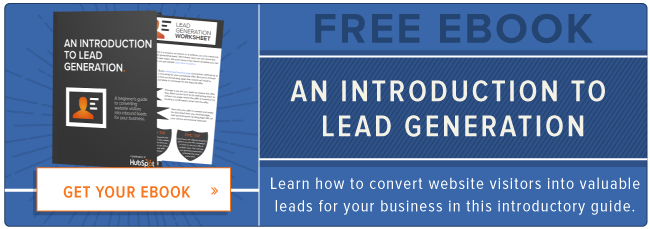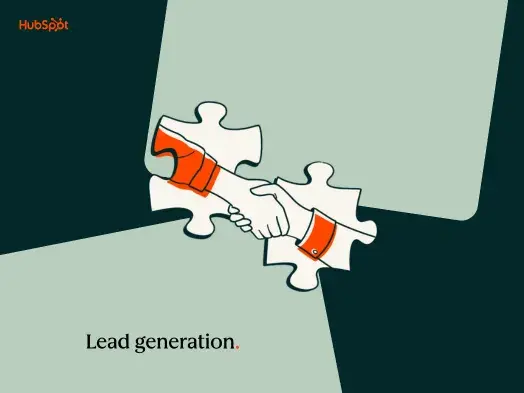In this article, you’ll learn what demand generation is, some demand generation strategies that work (according to experts), and demand generation templates to help you implement these strategies easily.
Skip to:
What is demand generation?
Demand generation is a comprehensive marketing strategy that focuses on creating awareness, interest, and desire for a product or service, eventually driving potential customers to take certain actions, such as engaging with the brand or making a purchase.
With demand generation, you’re primarily concerned with how a potential customer can learn about, trust, and purchase your product or service. So you’ll be implementing strategies that will help you introduce your product to different buyer groups, show the problem(s) your product can solve, establish authority within your industry, gain the trust of your potential customers, and nurture your relationships with your customer base to ensure that they don’t churn.
Sayem Ibn Kashem, the founder of FacileWay, puts it perfectly: “Demand generation is the heartbeat that keeps a business alive. It‘s not just about grabbing leads; it’s about creating a buzz, sparking interest, and making people genuinely want what you're offering. [This journey] starts with making your presence known, nurturing that initial spark of interest, and guiding potential customers through every step until they become devoted users.”
Many newbie marketers often use the terms “demand generation” and “lead generation” interchangeably — but they’re not the same thing.
With demand generation, you’re stimulating market demand for your product/service on a large scale. This encompasses marketing and sales initiatives that go beyond merely capturing leads; instead, they aim to build brand awareness and engagement throughout the customer journey.
Lead generation, on the other hand, is the subset of demand generation that aims to turn interest in your product into action. Here, your goal is to identify individuals or businesses who’ve expressed interest in your offering, and get them to make a definitive move to becoming paying customers — whether that’s providing their contact information, downloading a resource, or signing up for a free trial.
To explain the difference between the two tactics, Joe Kevens, the founder of B2B SaaS Reviews and Director of Demand Generation at PartnerStack says: “Lead gen is about taking more slices from the pie, and demand gen is about baking a bigger pie. [For example] search ads are considered a lead generation tactic because they capture leads who are in the market searching for a solution. In contrast, podcasting is considered a demand generation tactic because it enables vendors to win the hearts and minds of listeners, who will become leads when they need your solution.”
Demand Generation in Marketing
As we’ll see in the next section, demand generation strategies include activities like content marketing, SEO, social media marketing, PPC advertising, email marketing, and more.
Marketers execute these strategies using different platforms, such as their company blog, social media platforms, search engines, email marketing tools, podcasting tools, etc. They also use different content formats including images, videos (long and short), carousels, infographics, and articles, among other things.
Here are a few stats that show how these demand generation strategies, platforms, and content formats have worked for marketers (according to HubSpot’s 2023 Marketing Trends Report):
- The highest ROI of any marketing channel are blogs, social media shopping tools, and influencer marketing;
- For the fourth year in a row, video is the most popular and effective media format;
- 56% of marketers plan to increase their investment in TikTok;
- 88% of marketers who already implement SEO practices plan to increase or maintain their investment.
These demand gen strategies have been the fuel of many, if not all, SaaS companies. Without them, there’d be no leads, sales pipelines, or revenue to keep the business afloat.
Why Demand Generation is Important
Demand generation is crucial for businesses, especially SaaS businesses, for several reasons. Here are some of them:
1. Brand Awareness
A strong demand generation program can get your product in front of different buyer groups within your target audience. These buyer groups, who likely don’t know of your product or the problems it addresses, will know about the value and benefits of your product, and how to integrate it into their daily lives — whether at work or home.
The goal of demand generation at this stage isn’t just to sell your product or service; it’s to create long-term relationships with customers who remember your product whenever they encounter a problem it can solve.
2. Cost Reduction
Customer acquisition is expensive. However, a business can reduce the money it spends to acquire new customers by implementing demand generation strategies that increase brand awareness and position the business as an authority in the industry.
When a business shows that its knowledgeable and trustworthy, existing customers will be more inclined to continue paying for the product. This recurring revenue can reduce how often the business runs expensive marketing campaigns, offers discounts, or pays referrers, which can save money in the long run.
3. Building Trust and Credibility
The key to getting customers for your business is getting people to trust you. You can do that by incorporating case studies, customer testimonials, and thought leadership content into your marketing and sales initiatives.
These tactics show prospects that your product does what you claim it does and that other people/businesses got great results when they used it. This boosts your credibility and convinces them to try your product.
4. Continuous Customer Engagement
Demand generation goes beyond the initial acquisition stage, and includes strategies that promote customer engagement, upselling, and retention throughout the entire customer journey. Getting your customers to keep using your product will help you reduce churn and maximize the lifetime value of each customer.
5. Recurring Revenue
If your business operates on a subscription-based model, you’ll need a steady stream of new customers and the retention of existing ones to get recurring revenue. Effective demand generation ensures that you get a healthy pipeline of leads and customers that sustain your revenue model.
Demand Generation Strategies
There are many demand generation strategies that businesses of all kinds can implement to generate interest in their products. Here are five tested and trusted strategies that work:
1. Content Marketing and SEO
Content marketing refers to the consistent creation and distribution of valuable and relevant content (blog posts, eBooks, whitepapers, videos, podcasts, thought leadership, etc.) that resonates with your target audience, establishes your brand as an authority, and drives customer action.
Since demand generation encompasses the entire customer journey, it’s only right to create content for each part of the sales funnel: awareness, consideration, and decision.
Top of the Funnel (ToFu) Content
At the beginning of the sales funnel, your goal isn’t to sell — it’s to educate prospects about your product.
People at the “awareness” stage of the buyer journey don’t know much about your product or the problem(s) it solves. They may not even know that they have a problem that you can solve. So the content you create here should answer their questions and position your business as the go-to resource in your industry.
Examples of ToFu content are articles (like this one you’re reading), social media posts, podcasts, videos, and infographics.
Let’s use HubSpot as a case study. HubSpot’s blog is divided into several sections: marketing, service, sales, website, The Hustle, and Next in AI — all of which comprise hundreds, if not thousands, of blog posts created to answer prospects’ questions and address their unique pain points.

Through these articles, HubSpot has positioned itself as a knowledgeable and trustworthy resource that people can visit to learn about these topics.
Marketers often combine TOFU content with search engine optimization (SEO), especially for blog articles. SEO involves optimizing website content, including landing pages, to rank higher in search engine results. Incorporating SEO best practices (such as fulfilling search intent and using the right long-tail keywords) into your content boosts organic visibility and ensures that your website is easily discoverable by users actively searching for products or services like yours.
Middle of the Funnel (MoFu) Content
At this stage, users already know about your product and the problem(s) it solves — and they’re now considering whether your offering is the best fit for them. The content you create at this stage should convince them that it is. Examples of MoFu content include eBooks, whitepapers, reports, guides, case studies, templates, and webinars.
These types of content offer an in-depth and data-driven exploration into the various parts of your products and how they can help improve the lives of your prospective and existing customers. MoFu content is often gated, which means users have to give up their name, email address, and other personal information to get access to the content.
For example, in the Resources tab on HubSpot’s homepage, you can find links to dozens of gated eBooks, guides, case studies, and even free courses — all of which teach potential customers the ins and outs of HubSpot’s offerings and how they can use these products to grow their business.

In addition to positioning Hubpot as an industry leader, this MoFu content also helps HubSpot generate high-quality leads through sign-ups and registrations.
Bottom of the Funnel (BoFu) Content
At this point, prospective customers have already identified their pain points and how your product can be a potential solution. So the content you create now should show them why your product is the best solution when compared to similar products in the market (your competitors). Examples of BoFu content include live demos, consultations, free tools, competitive comparisons, and free trials.
A great example of BoFu content is HubSpot’s free CRM tool.

Although this tool is free, its features are robust enough to provide value to users, including business owners, salespeople, marketers, customer service teams, and operations managers. The rationale behind this is that when users derive value from a free product, they’ll be more likely to pay for other HubSpot products in exchange for even more value.
Want to see how a piece of content can generate demand for a product through the entire customer journey? Debbie Moran, the Marketing Manager at RecurPost, gave me a breakdown of how a single article helped RecurPost boost its customer base.
“At RecurPost, demand generation strategies have always worked. For instance, our blog post titled ‘How To Automate Tweets on Twitter: All-in-One Guide’ helps users seeking information on Twitter automation and its importance.
In the last month alone, the post attracted 720 readers, indicating a substantial audience interested in the topic.
This post strategically led readers to explore RecurPost's pricing page and the product’s features, moving them closer to the decision-making process.
Ultimately, the demand generated by the blog translated into tangible results in the Conversion stage. The blog's influence is measurable, contributing to a 20% increase in trial sign-ups for RecurPost in the last quarter.” 
2. Organic Social Media Campaigns
When asked about his favorite demand generation strategy, Taylor Scher, a B2B SEO consultant for SaaS companies, says: “Social media easily. Organic social is a low CAC channel that allows you to build demand (and a community) for your brand without paying for it.
[But] you have to genuinely be invested in it. Companies think posting their recent blogs on LinkedIn counts as ‘social posting,’ but you have to focus on delivering value in your content. Make your posts informative, short, and to the point — and focus on consistency.”
Taylor’s love for organic social media isn’t unusual. According to Demand Gen’s 2023 Benchmark Survey report, 45 percent of marketers are prioritizing social media in their demand generation strategies. Why? It’s because it works.
Shopify is a great example of a company that uses organic social media marketing to the fullest. It has amassed 1.2 million followers on Instagram by creating colorful, funny, and informative posts about Shopify’s tools, customers, and partnerships.

Instagram’s not the only social platform you can use for demand generation, though. You can also leverage other platforms like Facebook, LinkedIn, and X (formerly Twitter) to increase brand visibility, share content, and engage with your audience.
Pro tip: While it’s great to post social media content on your company profile, you can increase your reach by asking your employees to post for you. According to Taylor Scher, “Individual posts almost consistently outperform company posts, so you’re now getting additional reach with your brand. This contributes to building demand for your product.”
3. Social Proof
We talked about case studies being MoFu content that you can create to convince prospects that your product is right for them. But case studies, customer testimonials, and user reviews, on their own, are powerful demand generation tools known as social proof. The reason they’re so effective is that people tend to believe that a product can work well for them when they know that it’s been effective for other people/businesses.
“Sharing success stories and positive experiences from satisfied customers helps build trust and credibility, which are essential for generating demand,” says Kevin Ameche, the President at RealSTEEL. “Potential customers are more likely to be influenced by the experiences of others and feel confident in their decision to choose a particular SaaS solution.”
Kevin’s not the only one who endorses social proof. Joe Kevens of Partnerstack does too. “My favorite demand generation strategy is leveraging user reviews throughout the buyer journey because it aligns with how buyers buy SaaS and how vendors can influence their decisions,” Joe explains. “Buyers want to hear what their peers who have used a SaaS product say about it, not what a vendor says about it, and user reviews provide that information. In my experience at PartnerStack, LevelJump, and Influitive, user reviews have influenced between 30-50% of buyers, with a significant amount saying they learned of the SaaS solution through a review site and selected our solution because of our reviews.”
4. Pay-Per-Click Ads
While SEO and organic social media campaigns are effective at helping you build a community and generate demand for your products, it does take a while to see tangible results with them. If you need to generate demand quickly on search engines and social media, you’ll need to run pay-per-click (PPC) ads.
As the name implies, with PPC ads, you only pay when someone clicks on your ads and lands on the web page you’re advertising. For example, when I search “free sales crm” on Google, a sponsored (or paid search) ad for Bitrix24 pops up.

When companies run PPC ads, they’re not usually trying to educate prospects about their product. Instead, they’re aiming to reach people who are actively searching for the solution they provide. So for your PPC ads, you can send users to webpages that host gated content, such as eBooks, guides, reports, and whitepapers, that explain the nitty-gritty of your product and how effective it is for specific use cases.
It’s as James DeLapa, the Director of Digital Marketing at Wrike, explains: “Demand generation should start with an optimized website that serves as a knowledge resource for potential customers. From there, we can use PPC ads on Google, LinkedIn, and other platforms to introduce our product, but those ads must send users to strong landing pages tailored to the target user’s awareness level about our SaaS.”
Pro tip: When running paid search ads, the goal is to get your ads in front of people who are actively searching for products related to yours. So make sure you optimize your ad copy for keywords that prospective customers search for. This way, you’ll be able to turn clicks into conversions, and prospects into customers.
Email Marketing
Remember when I mentioned that site visitors have to give you their name, email address, and other personal information to get access to gated content?
When they do so, they’re added to your email list, so you can send them targeted and personalized emails about your product. Not everyone on your list will be quite ready to subscribe to your product just yet, so your email marketing campaigns aim to keep your company top of mind for when they’re ready to buy.
You can also use email campaigns to deliver educational content, share promotional offers, nurture leads, and keep your audience informed about product updates and company events.
According to Mailmodo’s 2023 State of Email report, 78.29 percent of marketers said that email marketing was one of their top-performing marketing channels. About 62 percent of them used email for awareness and promotional purposes in 2022, and 78 percent planned to use email for retention purposes in 2023.
In the report, Rahul Ranjan, the Associate Product Manager at Adda247, explained, “Email is the best channel to increase retention and engagement. It has really helped us in improving our retention rate and engagement rate. We can do various A/B testing with the subject lines, email template, etc. which helps in improving the open rate and CTR.”
Demand Generation Templates
Creating a robust demand generation strategy that covers content marketing, SEO, social media marketing, email marketing, or whatever marketing combo you want to try out, is no mean feat. And since you’d have to be consistently creating content, the entire strategizing process can be repetitive, monotonous, and strenuous. That’s why you should use demand generation templates.
Thankfully, some businesses have created templates that make it easy for you to gather and nurture leads, increase conversions, and boost sales for your brand.
1. Demand Generation Strategy Template by Cascade

Cascade’s template is designed to help marketing teams of all sizes create a comprehensive demand gen strategy that will help them reach, nurture, and convert their target audiences.
This template includes:
- 3 focus areas - These are the broad goals you plan to focus on as you create your demand generation strategy, e.g. generating leads, improving customer engagement, retaining existing customers, and increasing sales revenue.
- 6 objectives - These are the specific goals you want to achieve for each focus area. These objectives should be SMART (Specific, Measurable, Achievable, Relevant, and Time-bound). For example, an objective for retaining existing customers could be to increase app usage.
- 6 KPIs - KPIs, or Key Performance Indicators, are measurable values that you can use to evaluate and track your success in achieving specific objectives. Your KPIs should be relevant, measurable, actionable, and timely. For example, the KPI for the objective “increase app usage” could be to “increase app usage by 30 percent by the end of Q2”.
- 6 projects - Projects, as stipulated in this template, are activities you need to complete to achieve the KPIs you set for each objective. These projects should be SMART, too. So if your objective is to retain existing customers, your project could be “Offer 25 percent discounts on select plans/products”.
2. Demand Creation Strategy Template by Lucidspark

Lucidspark’s demand creation strategy template is designed to help you and your team build awareness, create content strategies, and marketing tactics to generate engagement, gain high-quality leads, and grow your business.
With this template, your team members can easily collaborate and brainstorm each step of building and launching your demand generation strategy. Here’s how you can use this template:
- Define your audience, their pain points, challenges, and needs.
- Identify what stage of the sales funnel your audience belongs to. Do they know of your product? Have they considered buying your product — or have they already purchased it?
- List the overarching objectives of your demand generation program.
- List some strategies that will help you achieve each objective.
- List some tactics that will help you achieve the goal(s) of each of your strategies. This can include things like writing blog posts, creating product demos, writing up case studies, etc.
- Pinpoint how you’ll measure your goals.
3. Content Strategy Template by Semrush

Since content marketing is a big part of demand generation, it’s only fitting to include Semrush’s content strategy template. With this template, you can:
- Set SMART content goals, e.g. increase organic traffic by 10 percent every month.
- Create buyer personas with information like:
- Demographics (age, gender, education level, nationality, ethnicity, etc.)
- Psychographics (beliefs, values, lifestyle, etc.)
- Pain points and challenges
- Preferred purchasing process (how often they purchase, their role in the decision-making process, etc.)
- Specify your available resources, including people, budget, and tools.
- Conduct competitor analysis to see what kind of content is (and isn’t) working for your rivals.
- Analyze your available content to spot gaps and opportunities for improvement.
- Establish content creation guiding principles, such as a content calendar, tone of voice, and brand style guide.
4. Social Media Strategy Template by Backlinko

Social media marketing is also a popular demand generation strategy, so here’s a comprehensive template to help you plan out your social strategy. With Backlinko’s template, you can:
- Set clear social media goals and KPIs, which will guide you as you develop and implement your social media strategy.
- Learn how to use foolproof methods, such as Google Analytics, competitive research, and other techniques to choose the right social media platforms to use.
- Set up a strategic plan to maximize your reach and engagement, and nurture the leads you get through your social media marketing efforts.
Elevate Your Business With Tested and Trusted Demand Generation Templates
Implementing the right demand generation strategies and using these carefully crafted templates can help you create a powerful framework for attracting, engaging, and converting leads. You’ll also be able to maintain (and increase) customer engagement and retention across all stages of the sales funnel, which is essential to generating recurring income and scaling your business.
Editor's note: This article was originally published in August 2014 and has been updated for comprehensiveness.
Lead Generation




![What is a lead magnet? 20 lead magnet ideas and examples [+ step-by-step]](https://53.fs1.hubspotusercontent-na1.net/hubfs/53/lead%20magnet%20represented%20by%20a%20magnet.webp)




![Gated Content: What Marketers Need to Know [+ Examples]](https://53.fs1.hubspotusercontent-na1.net/hubfs/53/UNGated%20Content.png)

![What Is Demand Generation? Here’s How You Can Create Buzz for Your Offering [FAQs]](https://53.fs1.hubspotusercontent-na1.net/hubfs/53/demand-generation-1-20250321-225687.webp)

